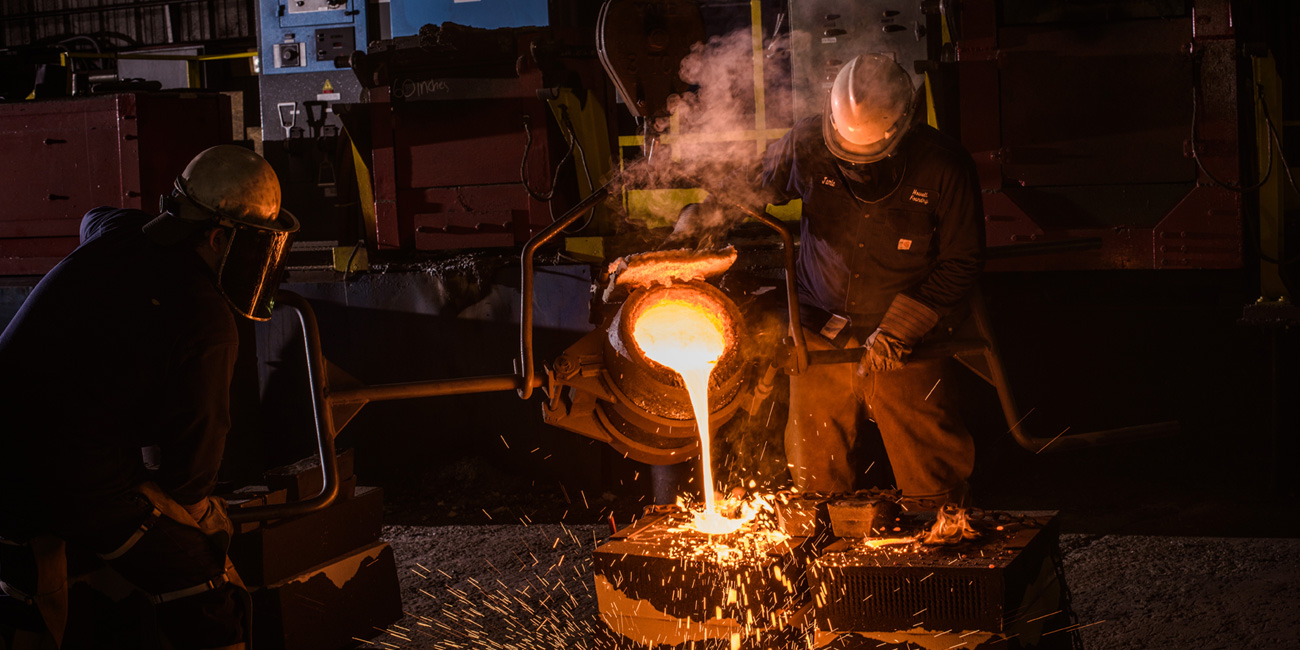Process Energy Benchmarking for the Metalcasting Industry
By Brian Reinke
Click here to see this story as it appears in the June 2017 issue of Modern Casting
In every energy program, we talk about benchmarking. To know how much we could save by optimizing our process, we need to compare our current performance to benchmarks. The problem is how to determine those benchmarks. The prior column discussed difficulties in benchmarking a plant; this column will discuss benchmarking a particular process.
As an example of the importance of benchmarking, I worked with a company that bought a new set of heat treat furnaces. After several years in operation, they had yet to benchmark their energy performance. The assumption was a new furnace meant great energy performance. It turned out measured energy performance was extremely poor on these new furnaces. Problems with both scheduling and furnace settings had cost the company hundreds of thousands of dollars over those years.
When benchmarking a process, you need to be sure you are comparing the same things.
• Some reported numbers might be based on energy used during a single cycle such as melting a batch. Other numbers are based over time such as over a month. Personally, I like energy numbers over a month since it includes inefficiencies like maintenance, scheduling problems, weekend shutdown-startup activities, and the variation in shift performance. This extra energy is your actual cost in running the furnace. Batch numbers gives you performance of your equipment while month data gives you a measure of your process.
• Watch that the benchmark is from the same technology. The benchmark for a cold air furnace and a hot air furnace (like a regenerative or recuperative) , are vastly different. Electric and natural gas furnaces have very different numbers.
• Melting furnaces tend to use Energy Intensity numbers such as Btu/lb. or kWh/t or mJ/t. Heat treat furnaces tend to use Energy Efficiency calculations based on the final temperature. This method is needed since the amount of energy to bring metal to 200F or 1,000F is quite different, even though both may be called “Heat Treat.”
• Watch the denominator. We say Btu per lb. [or kWh/tonne or MJ/tonne]. This may be the pounds initially loaded into the furnace (charge weight), the pounds out of the furnace (pour weight), or it may be the “good pounds out” of the process after scrap and recovery losses (cast weight). My preference is charge weight. This tells you the energy performance of the furnace based on heat required to process this total metal. “Good pounds out” includes the influence of recovery within the process.
Benchmarking can be internal (using internal performance) or external (using data from furnaces outside your company).
External is better, but sometimes you just can’t find those numbers or your particular process is unique. To use internal numbers:
• Collect energy intensity data from all similar furnaces at a plant and/or within the company and go back in history as far as you can . . . the more data the better. Use whatever time period works for the company. For instance, monthly data can be compared.
• Find the first quartile of the data. In most popular spreadsheets, this function is simply “=quartile(range,1)”. Twenty-five percent of the data is less than the 1st Quartile value. This is a better number than the average. Using this value as a benchmark means your new goal is a stretch but it can be achieved. Since you are already achieving this goal or better 25% of the time, naysayers can be challenged.
• As improvements are made over time, recalculate the 1st Quartile. Ideally the numbers should improve so your benchmark will move.
External benchmark numbers from an outside authority are best. The problem is finding these numbers. Some options:
• Manufacturers/Vendors—Talk to the vendors from both the equipment you own and competitors. The numbers from vendors tend to put their products in the best light and are often single cycle data versus monthly data, but discuss this point.
• Technical Papers—Read industry technical papers to obtain numbers from different studies. Some numbers are averages while others are state-of-the-art. Some are based on pounds in (charge weight) and others are based on pounds out (cast weight). Read carefully.
Based on your operations, you may not be able to reach state-of-the-art benchmarks immediately, but gathering this data and comparing to your actual operation allows you to see the possibilities and have a goal for improvements.

